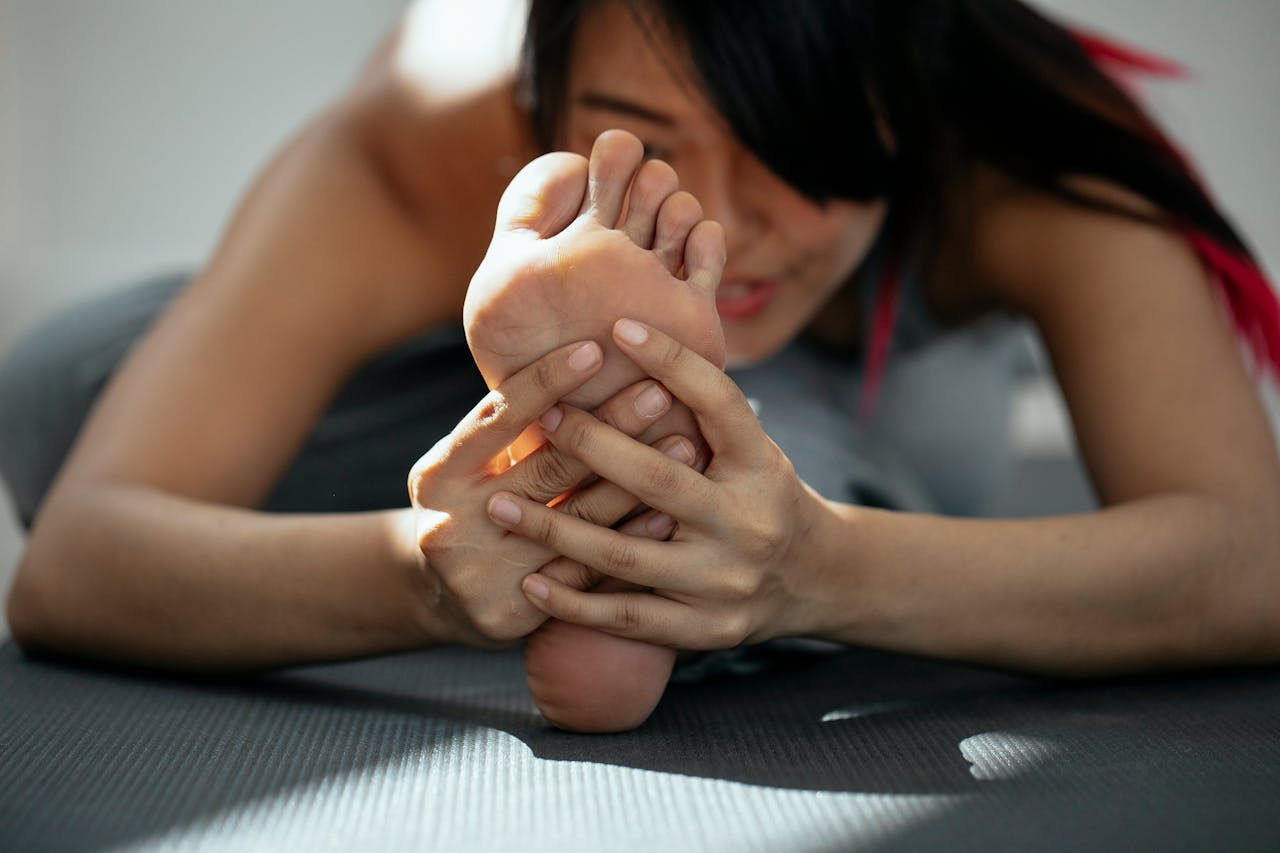
I use some form of testing with all my clients or patients in order to identify key deficits and monitor progress over time. There are loads of testing options, some of which rely on high-tech equipment, which needs a skilled operator and are therefore fairly expensive. Some, however, require little to no equipment and can be done in your own environment in your own time.
Consider these lower-body endurance tests. Strive to complete as many repetitions as possible for each exercise, ceasing when unable to continue or when proper technique falters. Document the achieved number of repetitions for each exercise as your initial benchmark. The benchmarks for these tests are established through various studies, ensuring their reliability and significance.
Test 1: Single leg calf raise to measure ankle plantarflexion
Target reps 25 each side Tempo 1sec up, 1sec down
Test 2: Single leg squat test to measure knee and hip extension
Target reps 14 each side Tempo as fast as possible
Position yourself facing a chair or bench with one leg lifted off the ground. Slowly lower your hips as you descend towards the chair, lightly tapping it, then push through your heel to return to a standing position. Focus on maintaining balance, utilising your other foot for stability if needed. Complete as many repetitions as possible within a 30-second interval on each side to establish your baseline scores.
Research conducted among patients recovering from knee ligament reconstruction revealed that those achieving higher scores exhibited significantly improved knee-related quality of life at both one and three years post-operation.
Test 3: Single leg hamstring bridge to measure hip extension
Target reps 25 each side Tempo 1sec up, 1sec down
Lie on your back with your feet elevated on a chair or bench, knees bent at a 90-degree angle. Lift one leg while keeping the heel of the other foot pressed down. Drive your hips upward until they reach full extension, aligning your shoulders, hips, and knees. Lower yourself under control while keeping the other leg raised, then repeat the motion. Perform all repetitions on one side before switching to the other. Maintain the correct pace by using a metronome set to 60 beats per minute.
A study conducted in 2013 on Australian Rules football players revealed that individuals unable to complete more than 20 repetitions per side were at a higher risk of sustaining future injuries compared to those capable of completing 25 reps or more.
What if my scores are low?
To enhance your performance, incorporate these exercises into your regular workout routine. Initially, divide the target number of repetitions into three to four sets. For instance, if the target reps for the single-leg hamstring bridge is 25, start with four sets of six single-leg hamstring bridges on each side. Progress gradually over the following weeks, increasing the intensity by transitioning to three sets of eight, then two sets of 12, aiming ultimately for a single set of 25.
It’s important to recognise that injuries seldom stem from a singular cause; rather, they typically result from a combination of factors. If you’re contending with an injury or experiencing difficulties in performing at your peak, feel free to reach out to me. Together, we can explore strategies to effectively manage your condition and optimise your performance.



